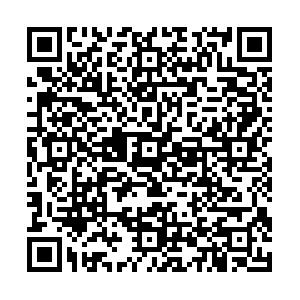Eyeglass prescription and refractive examination of grade 4-6 primary school students in Henan
-
摘要:
目的 了解河南省四至六年级小学生视力不良、配镜和屈光检查情况,为对学生视力采取精准干预措施和准确评估提供科学依据。 方法 采用分层整群随机抽样方法,抽取河南省17个省辖市29 187名四至六年级学生进行远视力检查和问卷调查。 结果 四至六年级学生总视力不良检出率为63.6%,女生(69.0%)高于男生(59.0%),城区学生(65.3%)高于郊县学生(62.5%)(χ2值分别为312.6,23.6,P值均 < 0.01);重度视力不良检出率为28.5%;随着年级的升高,视力不良和重度视力不良检出率呈上升趋势(χ趋势2值分别为278.7,775.4,P值均 < 0.01)。13.2%的学生过去1年内没有做过视力检查;视力不良学生戴镜率为27.0%,单眼视力不良学生戴镜率为3.2%;46.8%的戴镜学生配镜前接受了散瞳验光。 结论 河南省四到六年级学生视力不良问题突出,需要加强视力监测和眼健康教育工作。 Abstract:Objective To analyze the prevalence of poor vision and eyeglass prescription, refractive examination among primary school students of grade 4-6 in Henan, so as to provide scientific basis for precise interventions for student vision health. Methods A stratified cluster random sampling method was used to investigate a total of 29 187 students of grade 4-6 from 17 cities in Henan Province. Distant vision examination and questionnaire survey were conducted. Results The overall prevalence of poor vision for grade 4-6 students in Henan was 63.6%, with girls (69.0%) higher than boys (59.0%), urban students (65.3%) higher than suburban students (62.5%)(χ2=312.6, 23.6, P < 0.01). The prevalence of severe poor vision was 28.5%.With the increase of grade, the detection rate of poor vision and severe poor vision increased(χtrend2=278.7, 775.4, P < 0.01). Totally 13.2% of pupil did not have a visual examination in the past year. The rate of wearing glasses was 27.0% for students with poor eyesight and 3.2% for students with poor monocular eyesight. Totally 46.8% of the students wearing glasses received mydriatic optometry before wearing glasses. Conclusion The problem of poor vision among students of grade 4-6 in Henan is prominent, so it is necessary to strengthen eyesight monitoring and eye health education. -
Key words:
- Vision, low /
- Refraction, ocular /
- Prevalence /
- Students
-
表 1 不同人口统计学特征小学生视力不良检出情况
Table 1. Detection of poor vision in primary school students with different demographic characteristics
人口统计学指标 选项 人数 统计值 视力不良 重度视力不良 性别 男 15 610 9 208(59.0) 3 954(25.3) 女 13 577 9 364(69.0) 4 373(32.2) χ2值 312.6 168.5 P值 < 0.01 < 0.01 城乡 城区 11 554 7 547(65.3) 3 452(29.9) 郊县 17 633 11 025(62.5) 4 875(27.6) χ2值 23.6 17.0 P值 < 0.01 < 0.01 父母近视情况 均不近视 18 877 10 991(58.2) 4 309(22.8) 一方近视 7 950 5 733(72.1) 2 913(36.6) 均近视 2 229 1 753(78.6) 1 067(47.9) χ2值 679.1 963.3 P值 < 0.01 < 0.01 年级 四 9 663 5 581(57.8) 1 875(19.4) 五 9 752 6 221(63.8) 2 793(28.6) 六 9 772 6 770(69.3) 3 659(37.4) χ2值 278.7 775.4 P值 < 0.01 < 0.01 注: ()内数字为检出率/%;部分数据存在缺失值。 表 2 城乡不同年级小学生1年内视力检查次数分布
Table 2. Distribution of vision examination times of primary school students of different grades in urban and rural areas in one year
城乡 年级 人数 0次 1次 2次 3次 ≥4次 城区 四 2 329 249(10.7) 645(27.7) 717(30.8) 344(14.8) 374(16.1) 五 2 547 263(10.3) 654(25.7) 793(31.1) 362(14.2) 475(18.6) 六 2 640 263(10.0) 642(24.3) 990(37.5) 354(13.4) 391(14.8) 小计 7 516 775(10.3) 1 941(25.8) 2 500(33.3) 1 060(14.1) 1 240(16.5) 郊县 四 3 218 531(16.5) 963(29.9) 928(28.8) 413(12.8) 383(11.9) 五 3 656 545(14.9) 1 026(28.1) 1 125(30.8) 497(13.6) 463(12.7) 六 4 079 584(14.3) 1 156(28.3) 1 345(33.0) 479(11.7) 515(12.6) 小计 10 953 1 660(15.2) 3 145(28.7) 3 398(31.0) 1 389(12.7) 1 361(12.4) 合计 四 5 547 780(14.1) 1 608(29.0) 1 645(29.7) 757(13.6) 757(13.6) 五 6 203 808(13.0) 1 680(27.1) 1 918(30.9) 859(13.8) 938(15.1) 六 6 719 847(12.6) 1 798(26.8) 2 335(34.8) 833(12.4) 906(13.5) 总计 18 469 2 435(13.2) 5 086(27.5) 5 898(31.9) 2 449(13.3) 2 601(14.1) 注: ()内数字为构成比/%。 -
[1] COOPER J, TKATCHENKO A V. A review of current concepts of the etiology and treatment of myopia. Eye Contact Lens, 2018, 44(4): 231-247. doi: 10.1097/ICL.0000000000000499 [2] 卫生部, 国家标准化管理委员会. 学生健康检查技术规范GB/T 26343—2010.2011-05-01.Ministry of Health of the People's Republic of China, Standardization Administration of the People's Republic of China. Technical standard for physical examination for students GB/T 26343-2010.2011-05-01. [3] 夏志伟, 王路, 赵海, 等. 北京市2017—2018学年中小学生视力不良及影响因素分析. 中国学校卫生, 2018, 39(12): 1841-1844. doi: 10.16835/j.cnki.1000-9817.2018.12.022XIA Z W, WANG L, ZHAO H, et al. Prevealence of visual acuity impairment and associated factors among primary and middle school students in Beijing during 2017-2018. Chin J Sch Health, 2018, 39(12): 1841-1844. doi: 10.16835/j.cnki.1000-9817.2018.12.022 [4] 杨晓玮, 曲广智, 刘丽梅, 等. 山东省龙口市7~18岁中小学生近视患病率调查分析. 国际眼科杂志, 2018, 18(7): 1287-1289. https://www.cnki.com.cn/Article/CJFDTOTAL-GJYK201807033.htmYANG X W, QU G Z, LIU L M, et al. Prevalence of myopia among primary and middle school students in Longkou City, Shandong Province. Int Eye Sci, 2018, 18(7): 1287-1289. https://www.cnki.com.cn/Article/CJFDTOTAL-GJYK201807033.htm [5] 张莉, 杨联. 2018年重庆市某区中小学生近视现状及影响因素. 职业与健康, 2020, 36(14): 1959-1963. https://www.cnki.com.cn/Article/CJFDTOTAL-ZYJK202014024.htmZHAGN L, YANG L. Current situation and influencing factors of myopia among primary and middle school students in a district of Chongqing in 2018. Occup Health, 2020, 36(14): 1959-1963. https://www.cnki.com.cn/Article/CJFDTOTAL-ZYJK202014024.htm [6] 范奕, 郭婷, 陈福辉, 等. 江西省儿童青少年近视流行现状及影响因素. 中国学校卫生, 2020, 41(9): 1413-1416. doi: 10.16835/j.cnki.1000-9817.2020.09.038FAN Y, GUO T, CHEN F H, et al. Prevalence and influencing factors of myopia among children and adolescents in Jiangxi. Chin J Sch Health, 2020, 41(9): 1413-1416. doi: 10.16835/j.cnki.1000-9817.2020.09.038 [7] 吴丽波, 蒋爱民. 佩戴不同度数的屈光矫正镜及不带镜对近视发展的临床分析. 中国斜视与小儿眼科杂志, 2010, 18(1): 29-30. doi: 10.3969/j.issn.1005-328X.2010.01.010WU L B, JIANG A M. Clinical analysis of wearing different diopters and without diopters on the development of myopia. Chin J Strabismus Pediatr Ophthalmol, 2010, 18(1): 29-30. doi: 10.3969/j.issn.1005-328X.2010.01.010 [8] 李兴, 尹忠贵, 刘常明. 近视儿童家长对近视认知和防治意愿的问卷调查. 中国斜视与小儿眼科杂志, 2019, 27(2): 31-33. doi: 10.3969/J.ISSN.1005-328X.2019.02.011LI X, YIN Z G, LIU C M. Questionnaire survey on parents' cognition of myopia and their willingness to prevent and cure myopia. Chin J Strabismus Pediatr Ophthalmol, 2019, 27(2): 31-33. doi: 10.3969/J.ISSN.1005-328X.2019.02.011 [9] 朱嘉琦, 杨田丽, 杜康, 等. 父母视力健康知识对子女寻求视力健康服务的影响. 中华眼视光学与视觉科学杂志, 2020, 22(10): 721-727. doi: 10.3760/cma.j.cn115909-20190917-00250ZHU J Q, YANG T L, DU K, et al. The correlation between caregiver's knowledge of vision and its impact on seeking vision health care for their children. Chin J Optom Ophthalmol Visual Sci, 2020, 22(10): 721-727. doi: 10.3760/cma.j.cn115909-20190917-00250 [10] 中华医学会眼科学分会斜视与小儿眼科学组. 中国儿童睫状肌麻痹验光及安全用药专家共识. 中华眼科杂志, 2019, 55(1): 7-12. doi: 10.3760/cma.j.issn.0412-4081.2019.01.003Strabismus and Pediatric Ophthalmology Group, Ophthalmology Branch, Chinese Medical Association. Expert consensus on optometry and safe drug use in children with cycloplegia in China. Chin J Ophthalmol, 2019, 55(1): 7-12. doi: 10.3760/cma.j.issn.0412-4081.2019.01.003 -

 点击查看大图
点击查看大图
计量
- 文章访问数: 675
- HTML全文浏览量: 268
- PDF下载量: 53
- 被引次数: 0





 下载:
下载: